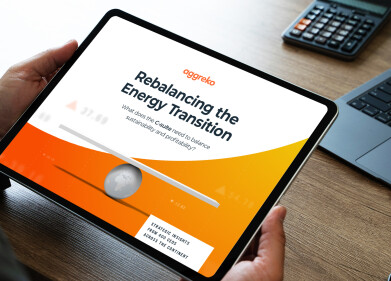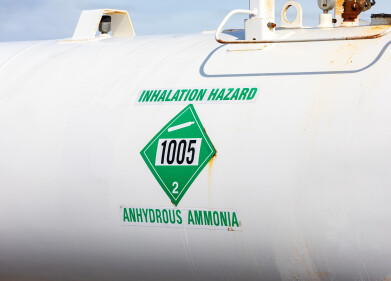Fuel for thought
UN Plans Historic Regulation of Plastics Industry
Mar 28 2022
You may not have noticed, but we are now almost a month removed from what the Executive Director of the United Nations’ Environment Programme called ‘the most significant environmental multilateral deal since the Paris Accords.’ The declaration, signed by 175 member-states of the United Nations on March 2nd, commits signatories to the creation of an international, legally-binding agreement to tackle the ‘plastics pollution crisis’. Now, this is when you’ll need to start counting the months: the UN’s deadline for drafting this ‘historic’ treaty is 2024.
Currently, the global production of plastics churns out 400 million tons of product every single year, and that number is always rising. The UNEP’s proposed treaty on plastic waste will attempt to address every gram of this output, reconfiguring the entire lifecycle of plastic from extraction to disposal, from crude oil to microplastics. For those in affected industries, these are striking, even troubling, ambitions; your company may make plastics, or it may use plastics, but just how plastic is your company?
In a recent interview on the topic of the global plastics agreement, the Executive Director of the United Nation’s Environment Programme, Inger Andersen, gave a sense of just how flexible industry will need to be if it wants to meet upcoming regulation.
Majority Report
‘Most Multilateral Environmental Agreements include provisions on reporting,’ confirms Andersen. Typically, the relevant articles of an Agreement will delegate the responsibility for producing reports to national governments, and as such, Andersen suggests, ‘Reporting can be a useful tool for parties to self-assess their compliance … and reflect on challenges and opportunities for improved implementation.’ It is important, then, to bear in mind that different companies – and sometimes, the same company operating in multiple regions – will have to abide by different conventions in reporting, depending on the needs, challenges and resources of a particular jurisdiction. Though, of course, these are multilateral agreements, so the production of reports is not intended to be of purely insular benefit.
‘On the basis of national reports,’ continues Andersen, ‘the Secretariat is called to prepare a synthesis report highlighting the main trends and challenges in implementation.’ As a result, the practices of different regions will necessarily converge in certain ways – otherwise, individual reports at the national level will be completely incomparable and impossible to synthesise. Typically, practices will be forced to converge by some form of standardisation – for each particular analyte, there will often be an internationally-recognised method for measuring it.
It should be clear, nevertheless, that the United Nations is not mapping new territory, that infrastructure for reporting established by the upcoming agreement will not deviate too much from the past. Indeed, the Executive Director goes further, highlighting the various schemes to monitor and report plastic pollution that are already underway – all of which might serve as templates for the new plan.
Andersen lists a number of high-profile initiatives. The Minderoo Foundation’s Plastic Waste Makers Index, for instance, was an attempt to increase transparency in the plastics industry, compiling data to produce a report that locates the source of single-use plastics in the environment. Then, there’s the Guidelines for the Monitoring and Assessment of Plastic Litter in the Ocean, developed by the Group of Experts on the Scientific Aspects of Marine Environmental Protection, which aims to provide industry with a road-map towards the harmonising of global plastics monitoring. One of the schemes that Andersen highlights, National Guidance for Plastic Pollution Hotspotting and Shaping Action, was even created by the United Nations’ Environment Programme, in collaboration with the International Union for Conservation of Nature and the Life Cycle Initiative.
Clearly, then, the way forward is a well-trodden path.
Peacekeeping Enforcements
‘To strengthen commitments,’ says Anderson, ‘some Multilateral Environmental Agreements include provisions for the development of procedures and mechanisms to promote implementation.’ Often, these provisions establish an agency similar to a compliance committee, with the authority to both reprimand and consult with parties that are at risk of breaching their obligations. As before, such an agency has more than a few precedents.
For example, the Paris Agreement had Article 15, which didn’t empower any committee, but did establish mechanisms for promoting up-take and compliance. Similarly, the Basel Convention on the Control of Transboundary Movements of Hazardous Wastes and their Disposal had Article 19, enshrining a verification process, according to which any party that suspected another party of breaching the bounds of the Agreement, whether in the present or in the past, could submit a report to the Secretariat.
To stay updated and receive regular news on the emerging circular economy in plastics, follow Petro Online.
Digital Edition
PIN 25.5 Oct/Nov 2024
November 2024
Analytical Instrumentation - Picturing Viscosity – How Can a Viscometer or a Rheometer Benefit You? - Sustainable Grease Formulations: Evaluating Key Performance Parameters and Testing Method...
View all digital editions
Events
Jan 20 2025 San Diego, CA, USA
Jan 22 2025 Tokyo, Japan
Jan 25 2025 San Diego, CA, USA
SPE Hydraulic Fracturing Technology Conference and Exhibition
Feb 04 2025 The Woodlands, TX, USA
Feb 05 2025 Guangzhou, China



















